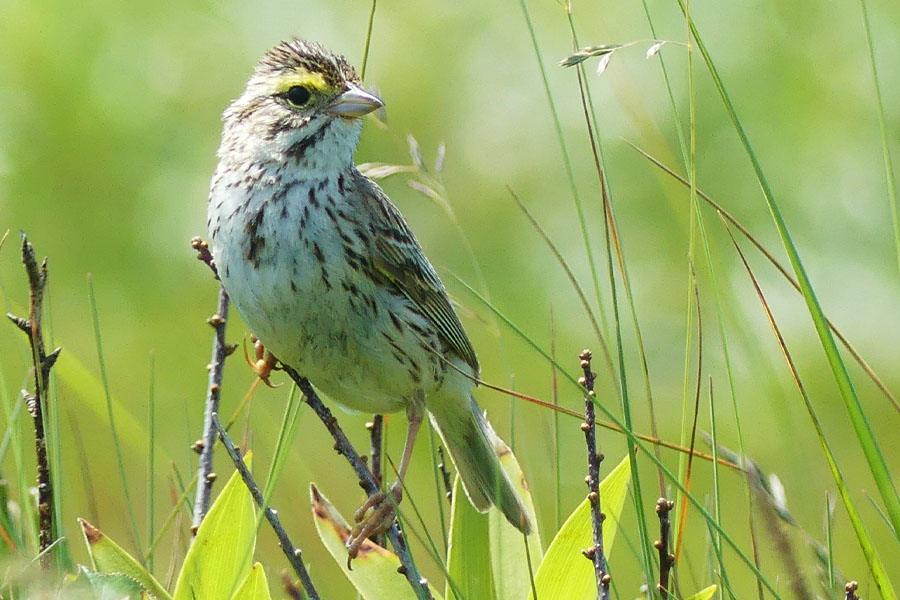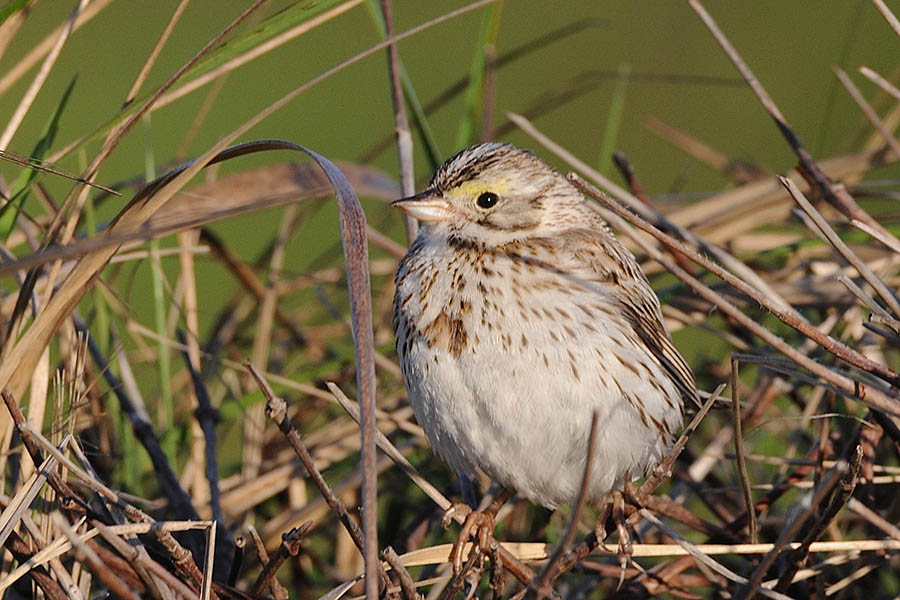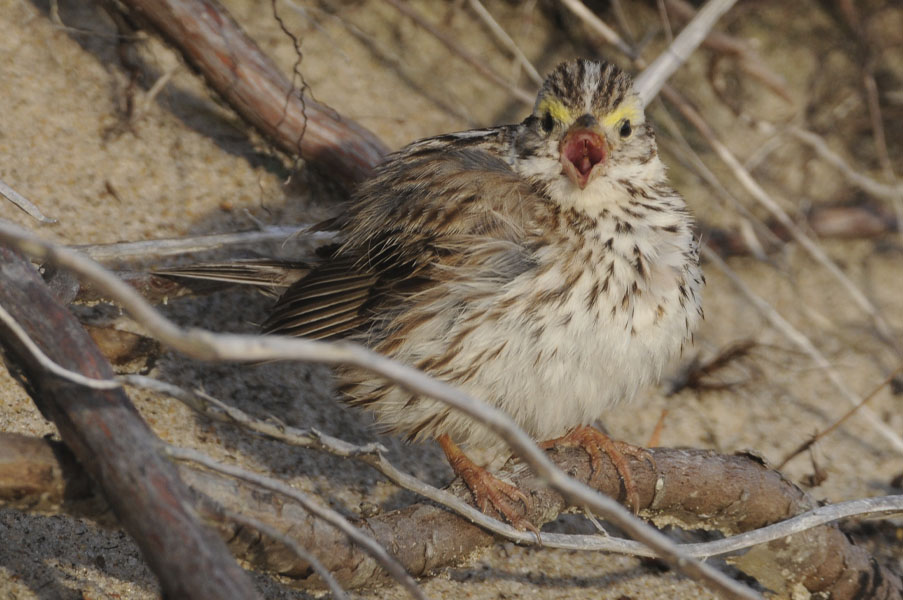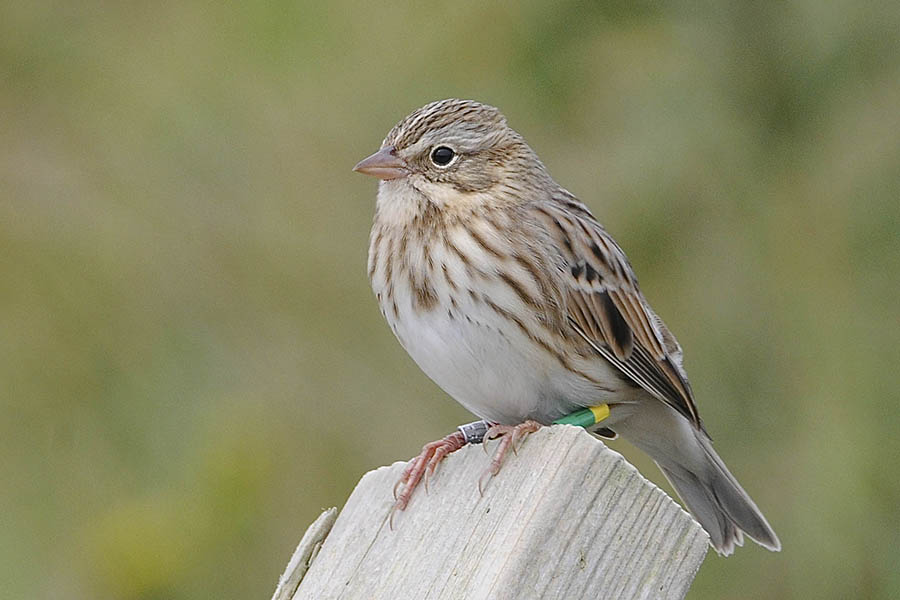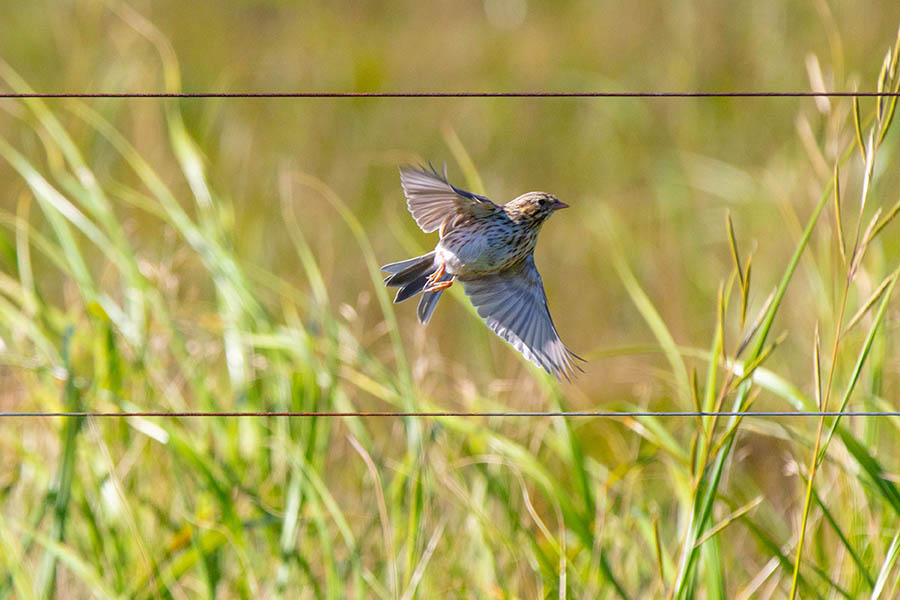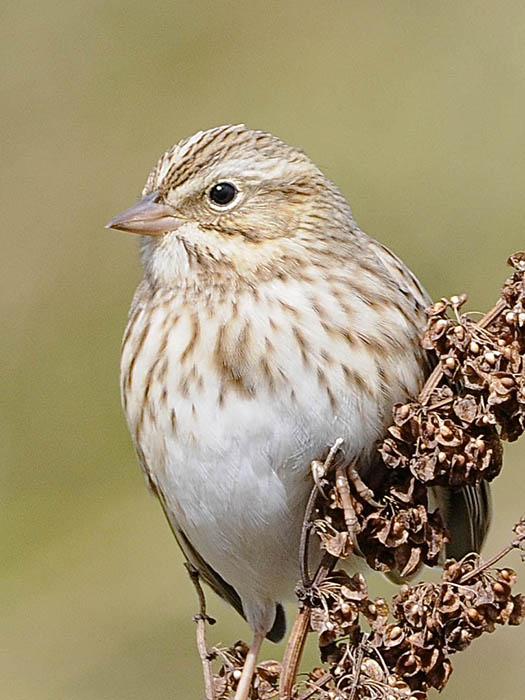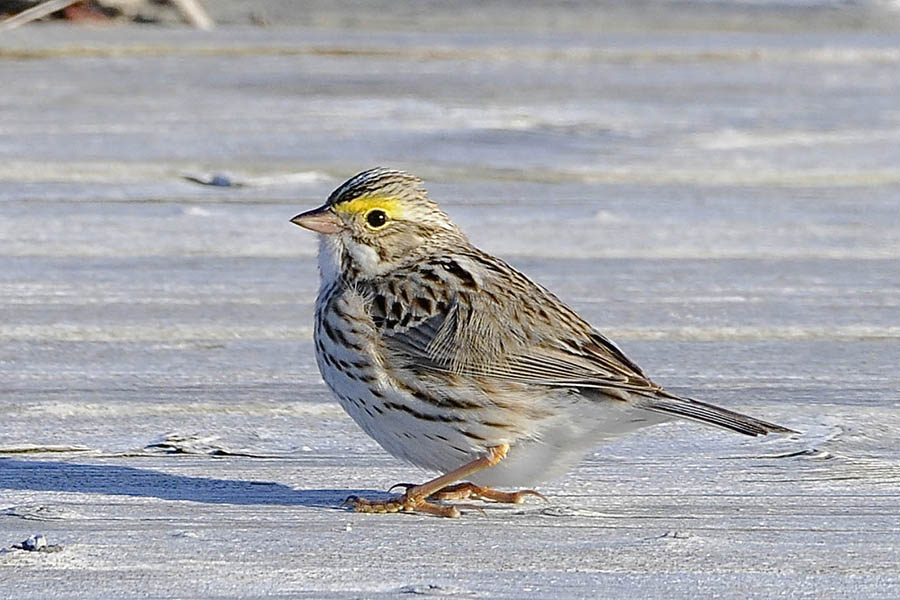
Ipswich Sparrow
Sable Island National Park Reserve
The Ipswich Sparrow nests in only one place in the world, and that is on Sable Island. The Ipswich Sparrow is the only breeding songbird on Sable Island and is protected under the Species at Risk Act.
On this page
- Species description
- Behaviour
- Population cycles
- Species at risk
- Protection and management
- Image gallery
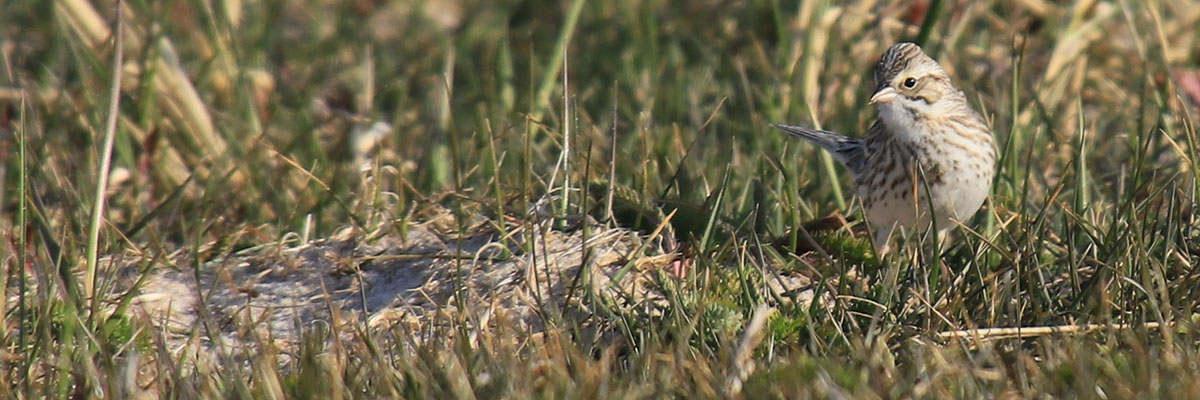
Species description
The Ipswich Sparrow is a small sandy-coloured bird. The Ipswich Sparrow is a subspecies of the Savannah Sparrow. It is both larger and lighter in colour than the Savannah Sparrow, likely a result of living in dune environments.
The Ipswich Sparrow gets its name from the town of Ipswich, Massachusetts, where it was first collected by a young naturalist named Charles Johnson Maynard.
Behaviour
Diet
In the summer, the diet of adult Ipswich Sparrows mainly consists of insects. The young are fed insects and berries by both parents. In the fall, marram grass seeds are an important food source as the birds prepare to migrate.
Breeding
Ipswich Sparrows breed exclusively on Sable Island. They are the only breeding songbird on Sable Island.
Males form territories soon after arriving on Sable Island.
Many females will have three broods (groups of hatched chicks) every year. The first hatch occurs in mid-May and the last hatch in mid-August. Females lay three to five eggs which they incubate for about 13 days.
The hatched young ones are fed by both the male and female parents for two to three weeks. Only a few days after the young ones have left the nest, females can start another nest and lay more eggs.
Nests
Ipswich Sparrows lay their nests 500 metres to 1,000 metres from where they themselves were raised.
Ipswich Sparrows make their nests on the ground. They create a small hole in the ground and fill it with materials such as dead weed stalks, grasses, sedges, moss, and horsehair.
Their nest consists of two parts: a coarse rim, and a soft inner cup where the eggs are laid. The nests average 5 cm deep and 7 cm wide. The heavy and compact nests protect against storms and rough weather conditions.
Migration
Ipswich Sparrows arrive on Sable Island in the spring. Most Ipswich Sparrows are present on the island during the summer to breed and lay eggs.
In the fall, most of the Ipswich Sparrows migrate south to spend the winter in coastal areas of eastern North America, from southern Nova Scotia to northern Florida, but primarily from Maine to North Carolina. They settle on coastal dune habitats similar to those on Sable Island.
Some Ipswich Sparrows spend the winter on Sable Island, finding enough food to survive and getting a head start on finding good territories for breeding.
Map of the Ipswich Sparrow spring migration
This animation shows the spring migration of sparrows from the eastern USA to Sable Island in 2018 and 2019.
Data come from birds wearing tiny radio-tag backpacks and tracked with the Motus Wildlife Tracking System.
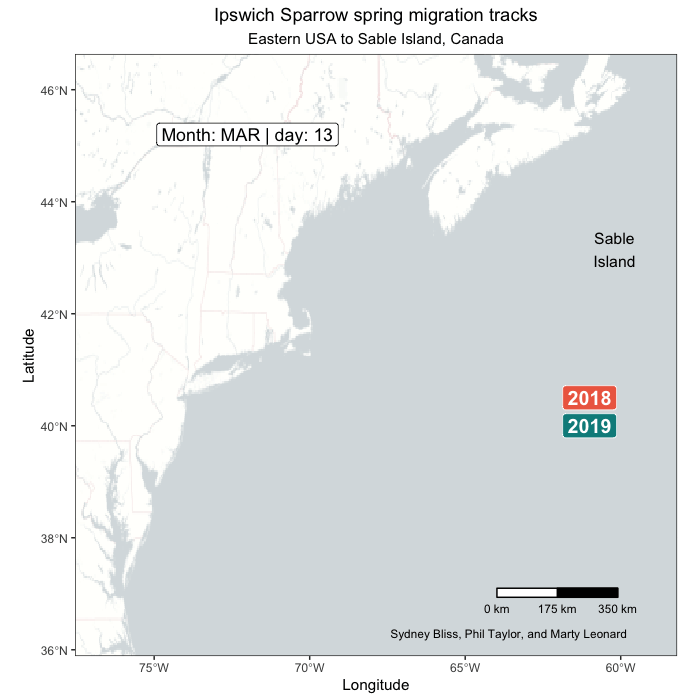
Population cycles
The Ipswich Sparrow population has been studied since the late 1960s. Since then, the population has fluctuated from 1,200 to 6,600 individuals.
Ipswich Sparrows can recover quickly from low populations because they can have multiple broods every summer.
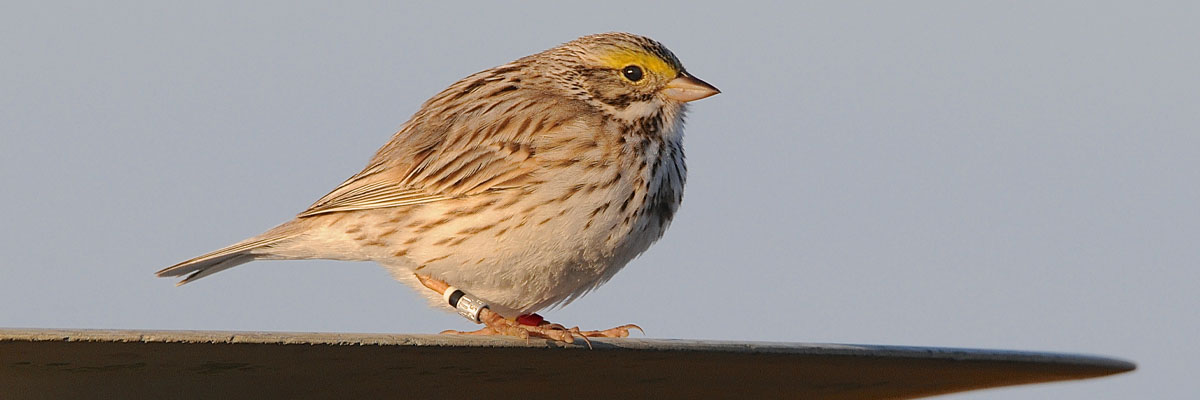
Species at risk
The Ipswich Sparrow is a species of Special Concern under the Species at Risk Act because of its limited geographic distribution and the fact that they breed exclusively on Sable Island. They are also vulnerable to any changes in the environment.
Threats
Similar to many migrating birds, migration poses the greatest risk for this species.
Additional threats include:
- destruction of habitat due to harsh winter weather and storms
- loss of habitat due to rising sea levels
Protection and management
Sable Island is both a national park reserve and a Migratory Bird Sanctuary. This means that the birds and their nests are protected on the island.
Parks Canada is monitoring the population and implementing recovery actions such as studying the migration of the Ipswich Sparrow.
Related links
- Date modified :
